THIS Year of the Rabbit, those celebrating will be gathered in their homes on the night of the eve (Jan 21), where they will feast until midnight before shooting fireworks into the sky, marking the first day of the Lunar New Year.
Many of the foods eaten by Chinese families during that reunion dinner have a special significance, believed to bring luck for the year ahead. Like the saying goes: “You are what you eat”, and Chinese believe that foods with names that sound similar to words with auspicious meanings are guaranteed to bring prosperity and good fortune.
If you’re looking to have Lady Luck (or Caishen (God of Wealth) in this case) on your side this year, you should try to include these on your dinner table:
Longevity Noodles
If your wish is to live a longer life, try Longevity Noodles. Often eaten during Chinese New Year, birthdays, and other Chinese celebrations, these egg noodles are to be eaten without cutting them. That’s because their length is also symbolic of the eater’s life. It can be fried and served on a plate, or boiled and served in a bowl with their broth.
To make it, start by stir-frying red pepper flakes, ginger, and garlic until fragrant and add some cabbage. After that, whisk up a sauce with sesame oil, soy sauce, and cornstarch, and add it to the boiled noodles. Salt and pepper to taste, and garnish with chopped green onions.
Yee Sang
Also known as the Prosperity Toss, Yee Sang was popularised and modernised in Malaysia and Singapore. Although families usually buy pre-packaged Yee Sang bowls, you can also make your own. It is essentially a salad made with julienned vegetables, crackers, and sauce, but some people even have their own twist with fruits and even raw salmon.
When setting up the Yee Sang, everyone is gathered around the table and each person pours in an ingredient while saying a New Year wish. Once all the ingredients are in, everyone will use their chopsticks to toss the shredded ingredients into the air while reciting various auspicious wishes, or simply “lao ah, lao ah”, which means that they claim the fortunes. It is also believed that the higher you toss the food, the more fortune you’ll have for the year.
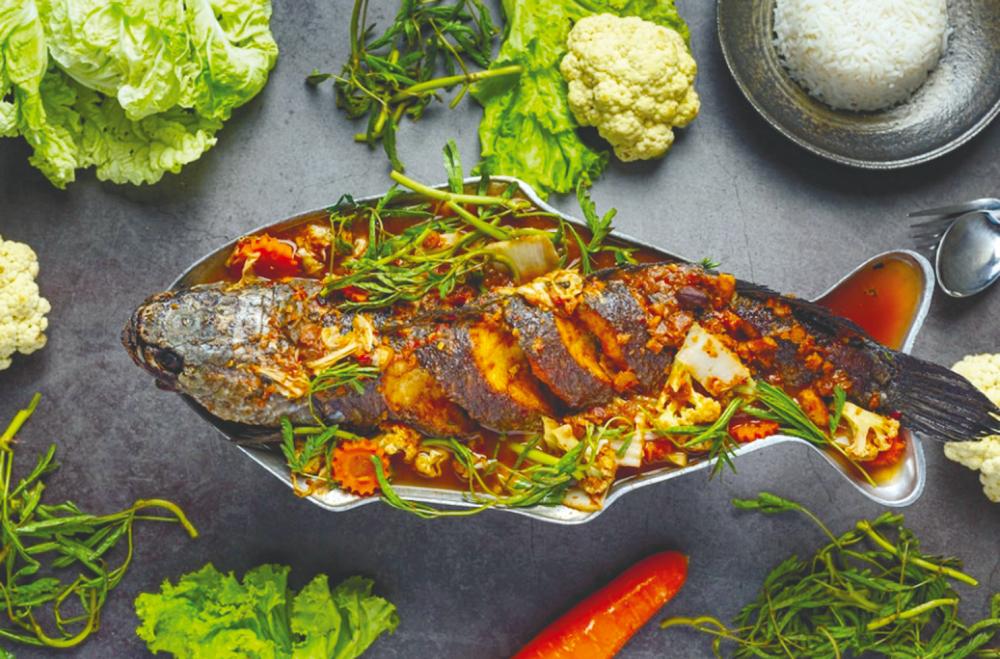
Fish
Fish is another popular Chinese New Year dish, as the word fish in Mandarin (yu) sounds like ‘surplus’. If you’re thinking of a wish to say during the Yee Sang, say: “nian nian you yu”. This idiom wishes that every year ends with ample surplus.
A whole fish is usually steamed or deep fried with a crispy batter, and the head and tail of the fish that’s not eaten symbolises that the year will start and finish with a surplus. If you’re looking for a surplus of good luck, have crucian carp (ji yu). If you’re looking for more gifts, have mud carp (li yu), and if you’re looking for surplus in general, have some catfish (nian yu)!
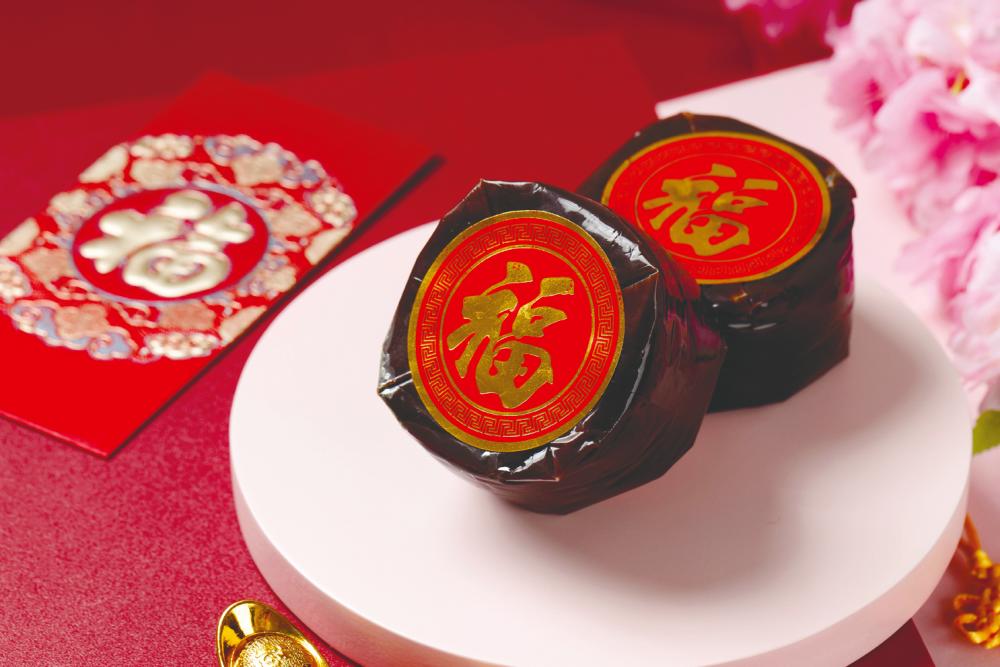
Nian Gao
Nian gao is a sticky rice cake usually made from glutinous rice flour and brown sugar, and comes wrapped in banana leaves. Its name means “year cake”, and symbolises “more to come”.
In Malaysia, nian gao is sliced into rectangular pieces, coated with a flour, water and egg mixture, and deep fried to a crisp to make a sweet snack. Sometimes, it is also eaten with fried yam and sweet potato, and believe me, one is definitely not enough.
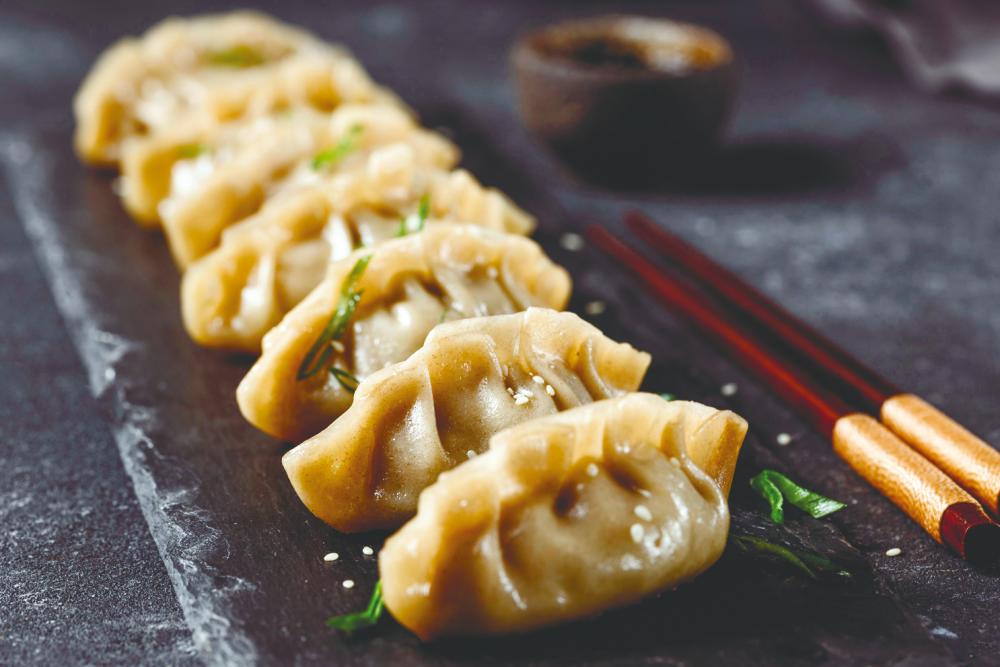
Jiao Zi
With a history of more than 1,800 years, Chinese dumplings are a classic lucky food for Lunar New Year. Jiao zis are stuffed parcels with savoury fillings consisting of minced ingredients like meat, egg, tofu, or vegetables wrapped in a thin and elastic dough skin. They can be boiled, pan-fried or steamed, but either way, they are very delicious.
These dumplings are tied with a lucky connotation because they look like Chinese ingots or yuanbao. If you’re hoping to get more luck in the money department for the new year, go for the mouth-watering dumplings dipped in savoury garlic/ginger soy sauce!
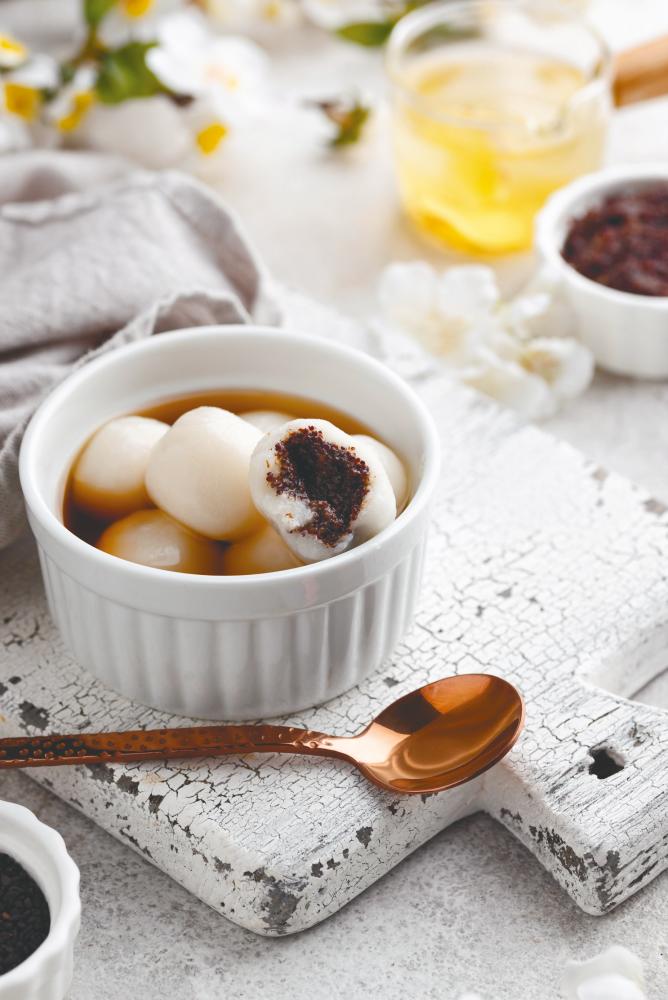
Tang Yuan
Usually eaten on the fifteenth and final day of the Chinese New Year celebration or during Winter Solstice, tang yuan are sweet colourful balls made from glutinous rice flour served in sugar water (tong sui). These soft chewy balls are usually filled with a nice sweet filling like red bean, peanut, taro, or sesame paste.
Unlike the other food that’s more for luck and money, tang yuan symbolises a family reunion. Since its shape is round and smooth like the full moon, families get together, make tang yuan together, and eat it so that they can meet again next year.
Whole chicken
Togetherness is an overarching theme of the Lunar New Year, and a whole chicken is another visual signifier of that unity. In Mandarin, the word for “chicken” is a homophone for good luck, prosperity, and even being together.
When chicken is served at the table, it’s usually fully intact with head and all, and usually served either as a cold dish like Hainanese Chicken or roasted. To make succulent Hainanese Chicken, you’ll need to poach it whole in a big pot, and it’s typically served with dipping oi, depending on the sauces at hand.
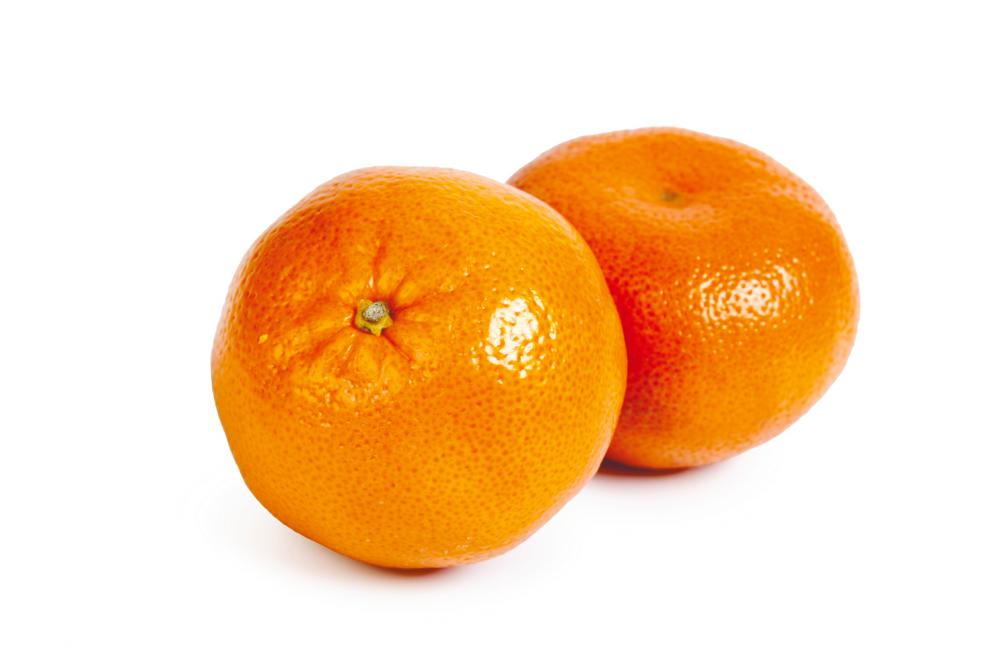
Citruses
During Chinese New Year, mandarin oranges are something you’re sure to see everywhere. Besides that, tangerines and pomelos are also some of the few popular citruses for the new year. In Mandarin, “orange” sounds like the Chinese character for “success”, while “tangerine” sounds like the Chinese character for “luck”, and “pomelos” sound like the Chinese character for “to have”.
Legend has it that in ancient China, there was a fierce beast called Nian. To scare the beast away, they used firecrackers and threw things at it, and my personal theory is that the citruses were some of their secret weapons. Perhaps the beast had a distaste for the smell of citruses.
Even if you don’t subscribe to any of these luck-giving beliefs, at least you’ll be sure to have a good feast and plenty of Vitamin C!









